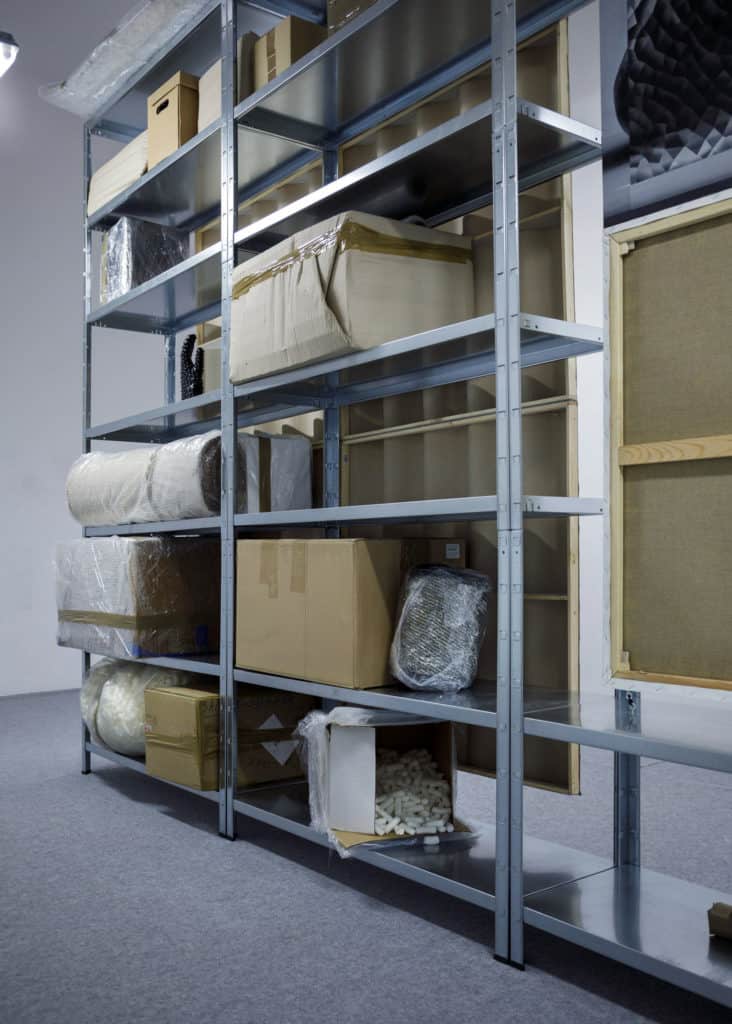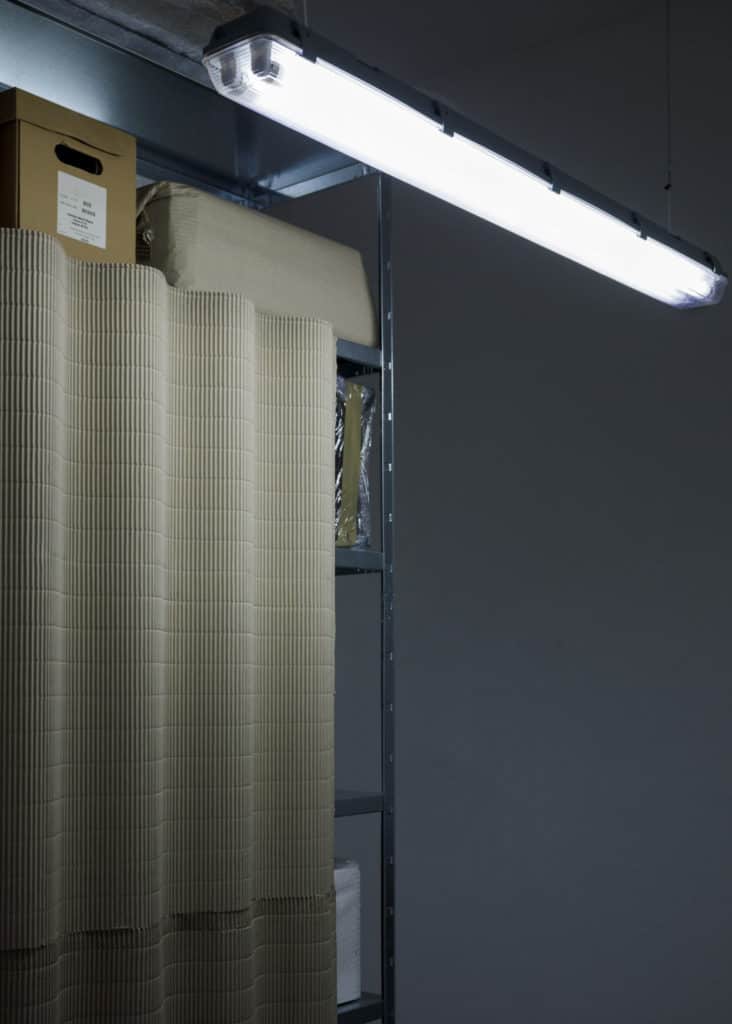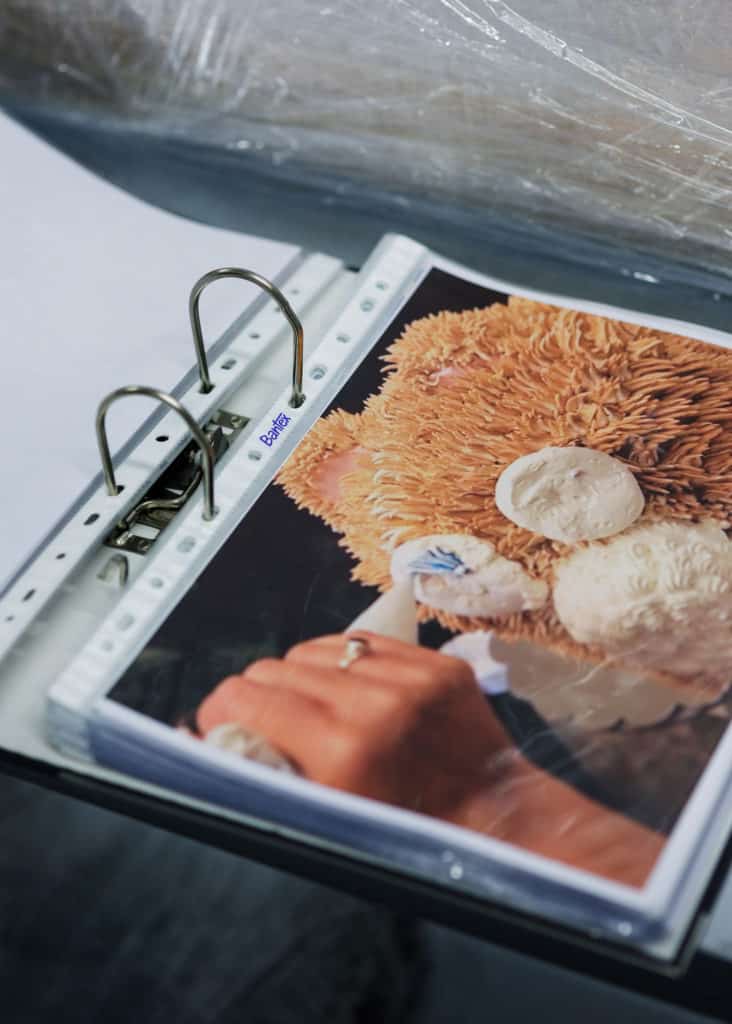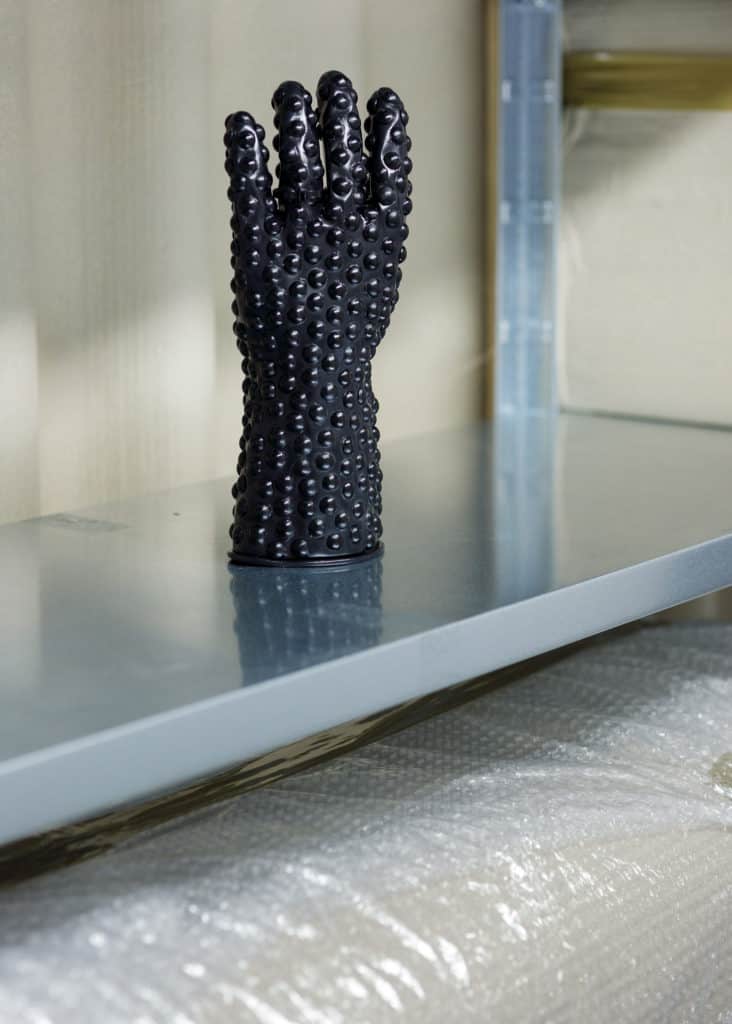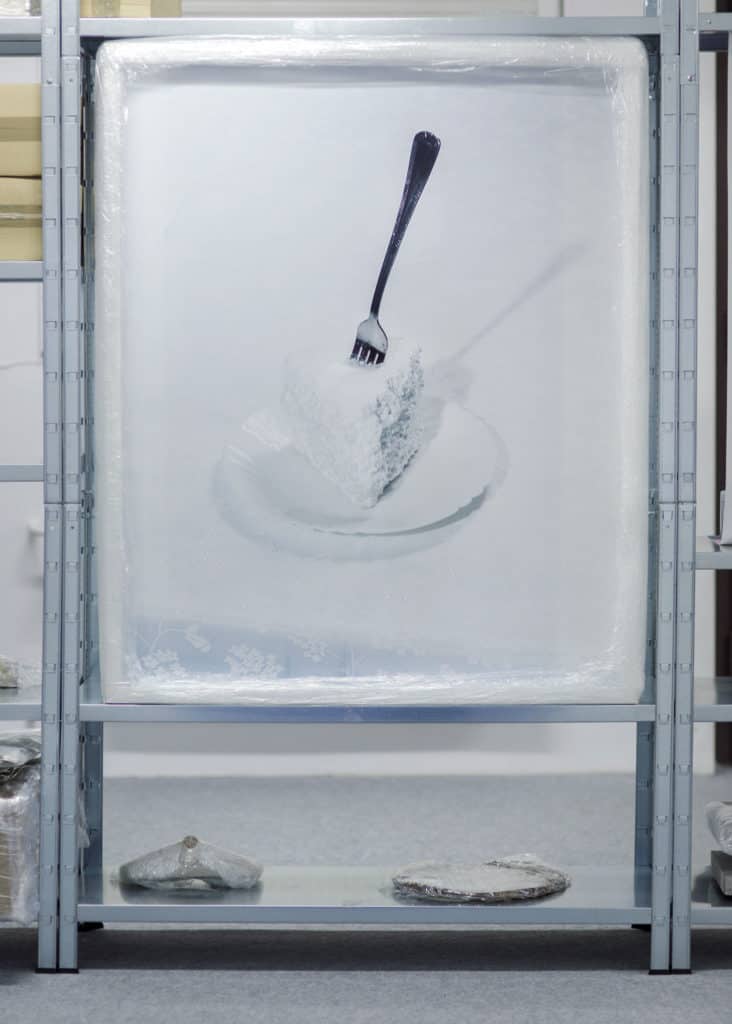The curators of “All That’s Left Is A Hangover That Won’t Go Away” advertise the exhibition as a spiritual journey through Poland, on which you set off to better understand and possibly challenge typical Polish mentality. The title itself, which comes from “A Minor Apocalypse”, a famous novel by the late Tadeusz Konwicki, is what makes the prospect of visiting the exhibition truly promising. On the other hand, it clearly shows that our visit will certainly not resemble a joyous trip to Disneyland. A prospective visitor would rather expect to find himself in an eerie cabinet of curiosities, and rightly so. Although the content presented at the exhibition is slightly biased, it offers an opportunity to learn Polish history in an enjoyable and engaging way.
The Great Pacific garbage patch with an impressive surface area of 1.6 km² drifts in the ocean. It was discovered in 1997 but it was only 20 years later that the mass media reported its existence. Nowadays the situation is quite different, as the problem of masses of plastic waste is constantly discussed on TV, in printed and electronic media. But why is this so? Politicians, media and trend-setting lobby groups brought the problem of plastic waste to the attention of the global community. These days this topic is so widely discussed, but it will certainly be overshadowed by another issue very soon. For the last fifty years we have been changing our planet so rapidly and irreversibly that we have managed to cause more damage than all the generations inhabiting Earth before us. This is real food for thought. Contemporary reality is built upon fast technological progress and omnipresent information delivered to us in huge quantities, which is certainly mind-boggling. As individuals we are perceived as consumers with a primitive mentality, therefore we are constantly bombarded with gadgets and “must have” products. Are we ready to face imposed globalisation? This exhibition also attempts to answer this question from a Polish perspective.
When you first arrive at Gdańsk City Gallery you will feel confused. The first room you enter will not be a typical white cube, which you might expect. Upon entering it, you will find yourself in the middle of a storage room. The floor is covered in grey carpet and the roller-blinds in the windows are down, which makes the whole place cold and austere. Seven sets of metal shelves are the only other elements in this mysterious scene. On the shelves you will notice packets, carton boxes and objects covered in bubble wrap, just as you would in a shop or at the post office. If you look closely, you will decipher works by three artists – Witek Orski, Martyna Kielesińska and Bartek Buczek among the boxes.
In the middle, close to the floor you will see KACYK by Martyna Kielesińska. It is a red, textile snake. Red is of particular importance here, as the colour symbolises communism. This animal is the personification of evil forces which have found themselves a comfortable place on a shelf filled with polystyrene foam balls and are fading away, just like an old, unnecessary toy. The snake will be the starting point for you from which you will proceed to analyse the remaining content of the exhibition. Whichever direction you decide to take, you will notice works by Martyna and two other artists that refer to the reality in Poland after the transformation of the political system which took place in the 1990s.
Bartek Buczek is a painter, however on this occasion he prepared some other objects apart from oil paintings, which he then put on the metal shelves. In one of his works he talks about Eternit fibre cement roofing, which used to be extremely popular and utilised on a mass scale. The material contains asbestos fibres and therefore, due to occupational safety concerns, was eliminated in the majority of economically developed countries. Nowadays in Poland this kind of roofing is associated with the ubiquitous kitsch aesthetic at the time of the communist state and with low-quality junk production. It was relatively easy to portray this wavy creature made of fireproof and weatherproof material in the form of an impractical object made of environmentally-friendly cardboard. This proves that post-modernist ideas are extreme in a way. Bartek covered some shelves in the room with this environmentally-friendly version of Eternit. He modified the roofing material and thereby made it unfit for its original function. Nevertheless, its shape and appearance remained the same. Through this creative concept Bartek shows how extreme certain human behaviours are. He also emphasises the difference between desires and functionality. On certain occasions, these two do not interconnect at all. This paradox is depicted through the choice of building materials and materials intended for everyday use, which the artist selects as inspiration for his works. Another work by Bartek which you will view on the other side of the row of shelves is equally intriguing. The artist used a black, rubber glove and transformed it into a five-pointed dildo. The work was prepared using a very minimalist technique. A simple glove was completely covered with bumps, thereby becoming a stimulus for sexual perversion.
If you follow the row of shelves, just a few steps further you will see GALAXY, a work by Witek Orski. In this work the artist presents ideas of Polish postmodernism. GALAXY is actually a photo installation made of white, ceramic mugs with imprinted photos presenting examples of Polish postmodernist architecture. One of the possible goals which the artist wanted to achieve through this piece was to challenge the concept of flat screens. The title of the work could have come about from there, as it may be a reference to the name of a popular mobile phone brand – SAMSUNG GALAXY. The mugs, or curved screens, feature a pastiche of real architectural mishaps. The kinds of buildings presented on these prints are ubiquitous in contemporary Poland. In fact, nowadays they find themselves in close proximity to state-of-the-art buildings and, therefore, look just like tacky mugs with prints standing next to your grandmother’s expensive coffee set. Orski resorted to kitsch and pastel hues, and built mini towers of mugs. There is a pinkish sky in the background, which makes the installation look like a real Polish block of flats after ‘thermo modernisation’ – a state-run initiative, which reduces the consumption of energy given to residential homes. The colours of the mugs also remind us of aesthetic standards applied on Instagram. Installations created by Witek Orski seem to defy commonly applied rules. They are the result of the creative process of a totally independent artist who freely selected the means to convey his message. We can argue that by defying the connection between form and intended function, they reflect postmodernist philosophy. Another equally fascinating work by Witek Orski which you will see in the exhibition is titled “How to Eat a Meringue?”. If you look at it, you will see a huge, appealing photo of a delicious dessert. You will think that this photo could have been used in an IKEA catalogue or a similar publication. There is, however, one detail which makes the picture unfit for this purpose. The meringue is not a real meringue, but rather a polystyrene foam block.
Another work that is worth mentioning is “Printed Video Materials” by Martyna Kielesińska. The artwork is a typical binder used in offices, which contains printouts of video frames. Most probably, these are frames from viral videos and other footage which has gained enormous popularity online. When you start browsing through this binder you will think there is nothing kitsch about them, but after a few minutes you will definitely get the impression that you have seen the same frames before on numerous occasions. This particular work is an allegory of the present times. Randomly selected frames have the same effect on us as the enormous amount of information we are bombarded with every day. As a result of this onslaught, we are able to decipher only small pieces of content, which do not carry any meaningful message. Martyna Kielesińska perceives emptiness as an inherent component of modern reality. She presents the concept of emptiness in her work entitled “A Study of a Kitchen”. It is presented in a separate small room in the gallery. The designated space is arranged as kitchen space and on display are austere, white pieces of furniture made of polystyrene foam.
Truth to be told, visiting this exhibition and raiding through plastic objects will not be an easy task for the average person. Those who understand art as beauty discovered in painted pictures will find the message of this particular exhibition extremely difficult to understand. However, the exhibition may play another important role. It has the potential to show the audience that the era of stereotypical fine arts is over and that visual arts will no longer only be about perfection and beautifully balanced lines and colours. Maybe this new approach was the only possible one to accurately present Poland’s turbulent history and its unclear symbolism. “All That’s Left Is A Hangover That Won’t Go Away” shows us that art is an undiscovered and unlimited field for creators and, at the same time, a space for constructive criticism. This criticism should equal detailed analysis rather than evaluation of all detected negative aspects.
The curators of the exhibition – Piotr Policht and Gabriela Warzycka-Tutak – made a successful attempt at provoking us to reflect deeper on Polish reality. Our own analysis will definitely be stimulated by the presented contemporary artefacts which were arranged and converted in a seemingly funny manner. The skewed scenarios resemble the frames of a movie you were watching in the evening while drinking a lot of alcohol. You remind yourself of such frames only the following day in the morning. You have to concentrate and look painstakingly carefully at what is before your eyes. If you do so, you will see a full picture of Polish anxieties, which have not died out yet. It will be amusing and sometimes embarrassing to see these pictures in your mind, but they will not disappear for a long time and will jump back, making your post-visit hangover last.
Words: Daga Ochendowska
All Thath’s Left Is a Hangover That Won’t Go Away
Gdańsk City Gallery 1,
ul. Piwna 27/29
27 April – 3 June 2018
Artists: Bartek Buczek, Martyna Kielesińska, Witek Orski
Curators: Piotr Policht, Gabriela Warzycka-Tutak



